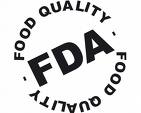
www.inoxpa.com
According to a recent report from the United States Government Accountability Office (GAO), the FDA is currently taking a hands-off approach to food additives that contain engineered nanoparticles. In fact, the FDA does not require food manufacturers to report additives that are deemed generally regarded as safe (GRAS). Who determines the GRAS status? The food manufacturers, without oversight or approval from the FDA! The following excerpt from the GAO report, United States Government Accountability Office, Report to Congressional Requesters, Food Safety: FDA Should Strengthen Its Oversight of Food Ingredients Determined to be Generally Recognized as Safe (GRAS) (2010), provides a realistic and chilling view at the current intersection of the American food supply and nanotechnology:
FDA’s approach to regulating nanotechnology allows engineered nanomaterials to enter the food supply as GRAS substances without FDA’s knowledge. While some uses of engineered nanomaterials have the potential to help ensure food safety, uncertainties remain about how to determine their safety in food. After reviewing the uncertainties associated with the safety of engineered nanomaterials, FDA has decided that it does not need additional authority to regulate products containing such materials. Rather, FDA encourages, but does not require, companies considering using engineered nanomaterials in food to consult with the agency regarding whether such substances might be GRAS. Because GRAS notification is voluntary and companies are not required to identify nanomaterials in their GRAS substances, FDA has no way of knowing the full extent to which engineered nanomaterials have entered the U.S. food supply as part of GRAS substances. In contrast to FDA’s approach, all food ingredients that incorporate engineered nanomaterials must be submitted to regulators in Canada and the European Union before they can be marketed.
Id. at Highlights page (emphasis added).
The application of nanotechnology to food is potentially very beneficial. Two specific examples are 1) nanotags to “improve the traceability of food products (the ability to track these products from point of origin to retail sale)” and 2) the most prolific “usage appears to be in food packaging, where applications such as antimicrobial nanofilms—thin layers of substances meant to hamper the growth of bacteria and fungi—may help bolster food safety.” Notwithstanding the current and obvious benefits, the FDA, and its foreign counterparts, realized that the potential for hidden challenges does exist. As a result, the FDA created a taskforce in 2007 to identify some of the potential pitfalls, and to recommend possible solutions. The taskforce identified several challenges posed by utilizing nanotechnology, specifically “ensuring the adequacy of methods for evaluating the safety of these engineered nanomaterials in food.” It also made mention of how little the FDA actually knows about nanotechnology and as a result, declined to include a definition of it in its report. (GAO Report 26-27).
At this point in time, even if something were to go awry as a result of nanomaterials being utilized in the food supply, where does the blame fall? According to current administrative law, the courts take an extremely deferential stance in favor of agency decisions when it comes to science. In Baltimore Gas & Elec. Co. v. Natural Res. Def. Counsel, 462 U.S. 87, 103 (1983), the Court stated, “[a] reviewing court must remember that the [agency] is making predictions, within its area of special expertise, at the frontiers of science. When examining this kind of scientific determination, . . . , a reviewing court must generally be at its most deferential.” This case dealt with a rule adopted by the Nuclear Regulatory Commission (NRC) based on findings “that permanent storage of nuclear waste would have no significant environmental impact.” Michael Asimov & Ronald M. Levin, State and Federal Administrative Law 595 (3d ed. 2009). This leads one to believe that if the NRC received this level of deference in the early stages of nuclear energy proliferation, the courts would almost certainly provide the same to the FDA’s lackadaisical decision-making approach to nanotech and the food we eat.
I certainly do not wish to suggest that the use of nanomaterials in our food supply is going to lead us down the long road of massive tort litigation, but I do wish to assert that if we are not vigilant from the very beginning, it is anyone’s guess where it could lead.
www.gao.gov/new.items/d10246.pdf
www.foodsafetynews.com/2010/03/gao-fda-does-not-ensure-safety-of-food-additives/

Oh my lord, this is scary I never knew this. It’s good people like you keep us informed on stuff like this will the fda be putting these people out of business?